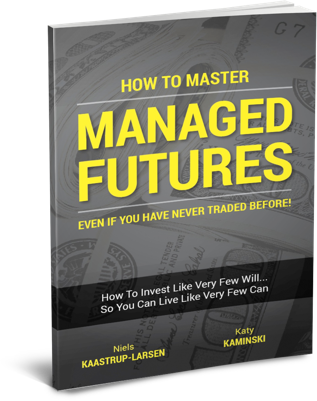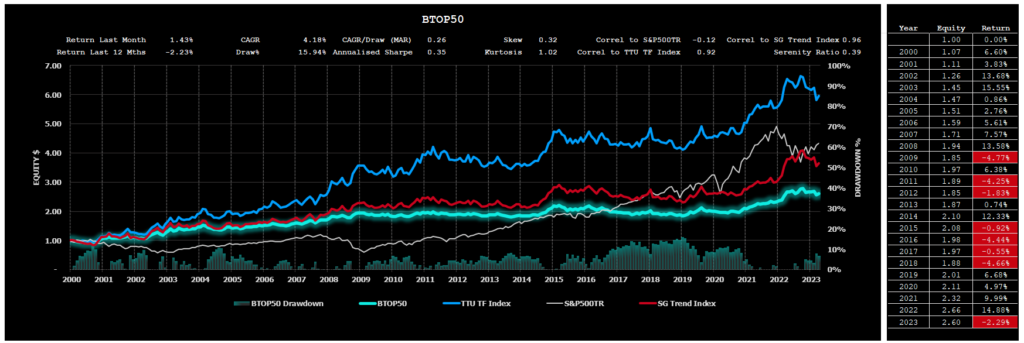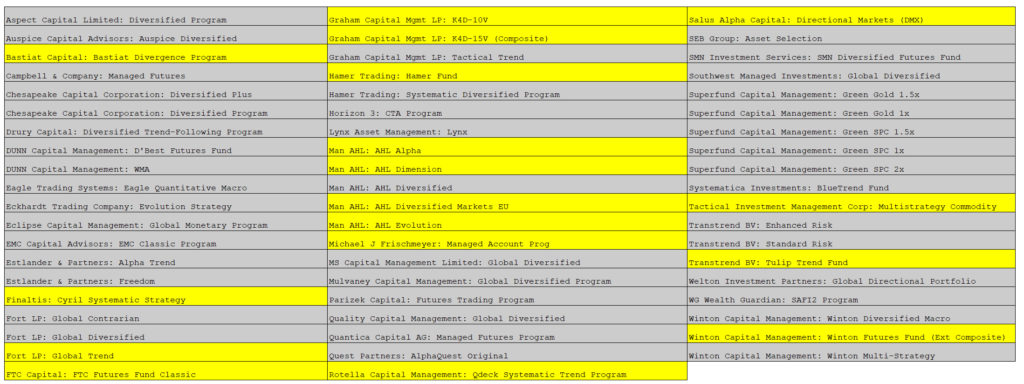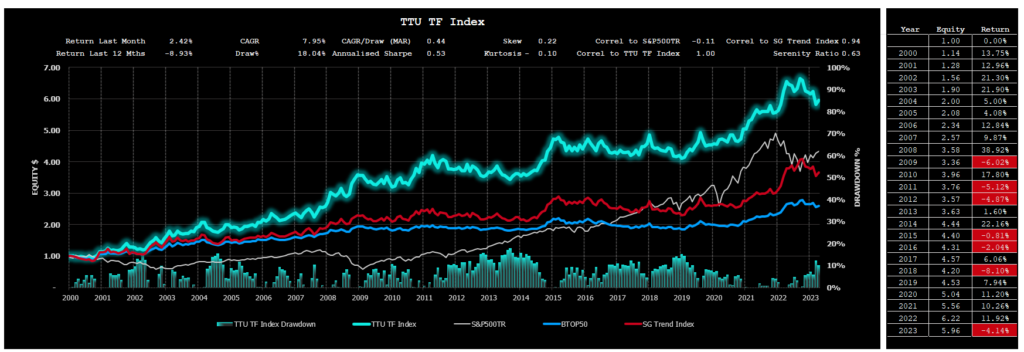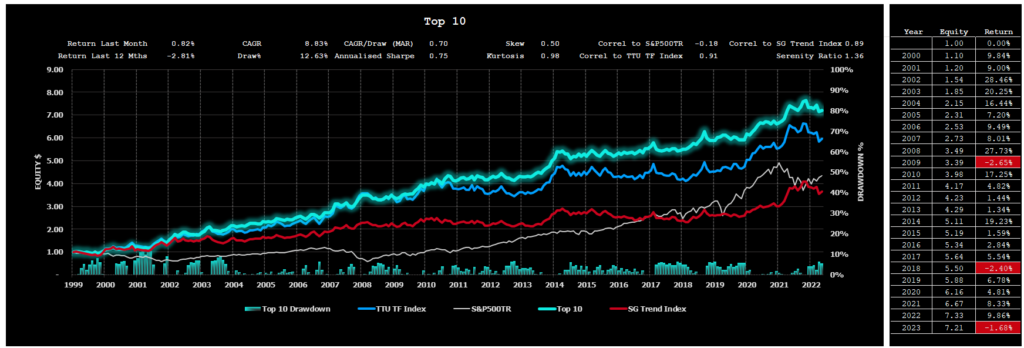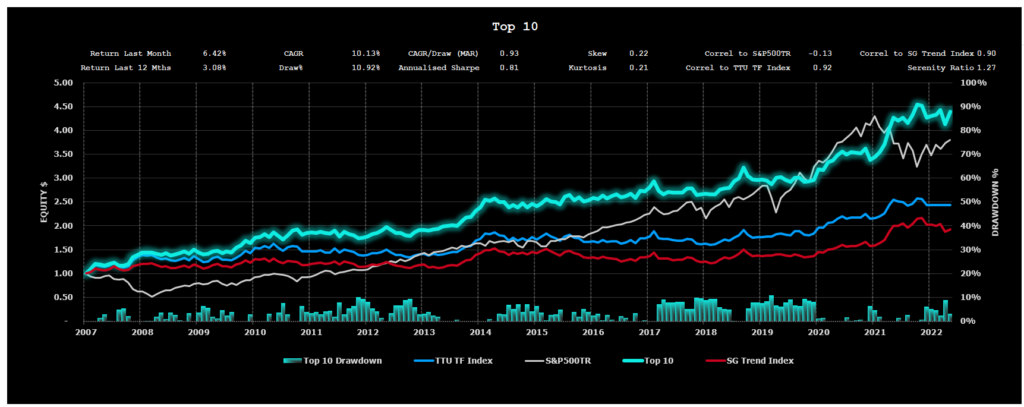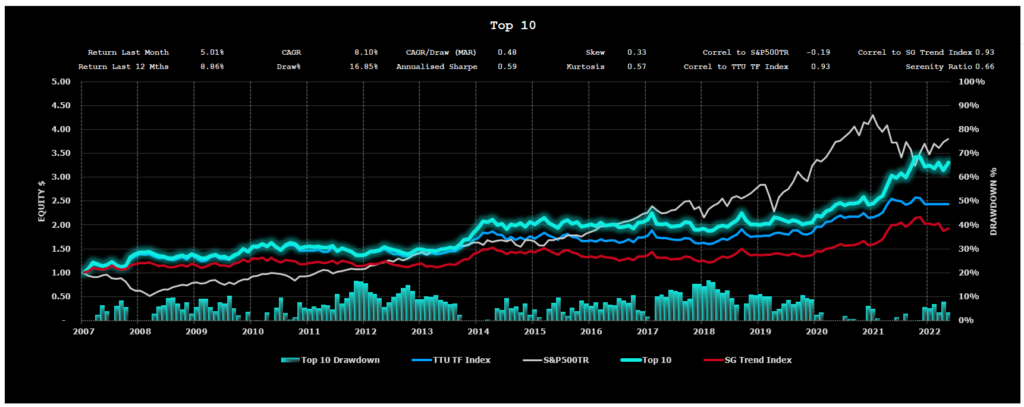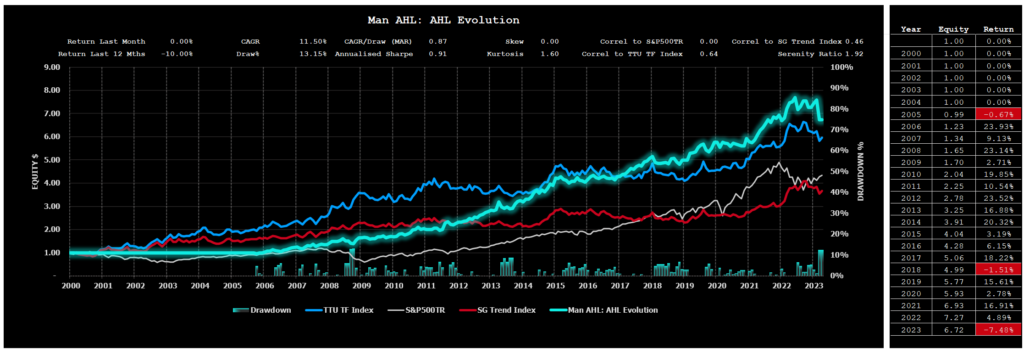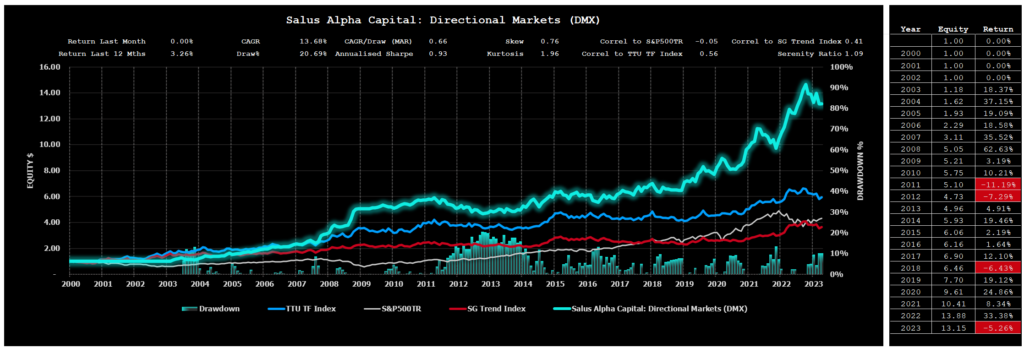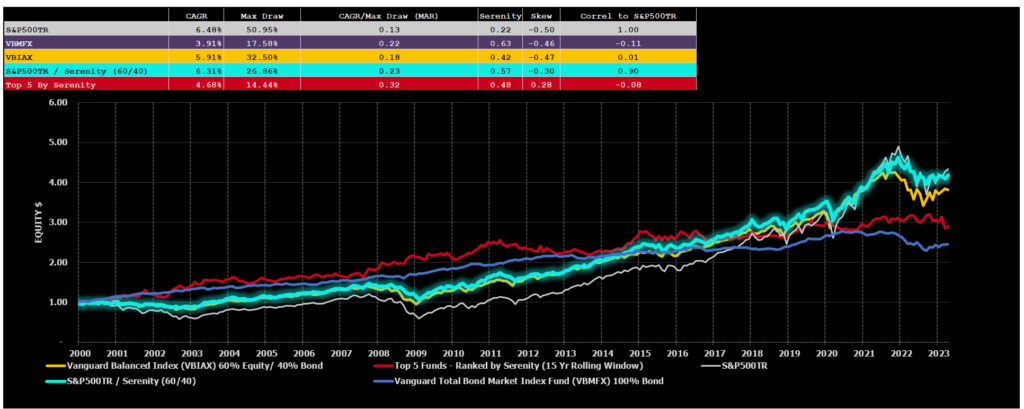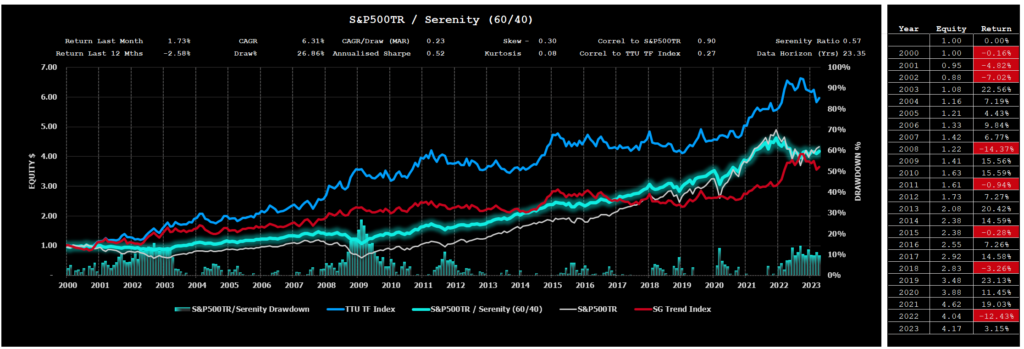This summary is written by Rich based on a conversation in our CTA series between Marty Lueck, Research Director and President of Aspect Capital, and the podcast hosts, Niels and Alan.
About Aspect Capital
Marty shared his experience of founding Aspect Capital 25 years ago with the aim to make trend following accessible and understandable to institutional investors as a liquid, directionally agnostic diversifier.
Over the years, Aspect has maintained a focus on research and enhancing its systematic investment process to better manage risk and investors' money. The company has diversified its business by offering a range of programs, including relative value and absolute return strategies. Aspect Capital now manages $10 billion with a team of 130 people, mostly based in London.
Marty and Niels reminisced about the 30th anniversary of AHL, the first company Marty co-founded with David Harding and Michael Adam, and the enduring chemistry between the three of them.
Marty discussed the evolution of Aspect Capital's investment philosophy from its beginnings as AHL. Initially, the three physicists who founded AHL focused on distilling essential features of markets that could be captured and systematized. This has evolved into a clear investment philosophy centred on broadly diversified trend following, being directionally agnostic, applying disciplined risk management and portfolio construction, and maintaining an unbiased approach to capturing trends.
Marty believes that trend following works due to behavioural aspects of investors and their inability to digest new information quickly. This leads to trading decisions and market flows that can be capitalized upon by trend-following strategies. Marty cited the COVID pandemic as an example of this, where investors took time to recognize the severity and impact of the crisis. He also mentioned that persistent uncertainty, as seen in 2022 with inflation, contributes to the effectiveness of trend following.
Reflecting on the period between 2009 and 2019, Marty argued that this was a less uncertain time, characterized by coordinated quantitative easing, responsive central banks, and plentiful liquidity, leading to a “Goldilocks” period for markets. This environment was atypical and likely contributed to the challenging period for trend following during those years.
Marty mentioned that Aspect Capital offers trend following in various formats, such as pure traditional market trend, flagship (80% trend, 20% modulating strategies), alternative markets portfolio, and a Chinese market trend portfolio. They also allow investors to customize blends and market choices based on investing constraints or ESG considerations and provide different access points for volatility choice and liquidity usage. This caters to a diverse group of investors with different preferences and needs.
Use of the Sharpe Ratio to Evaluate Portfolios
The conversation touched on Cliff Asness' argument that trend following strategies should focus on both making money in an absolute sense and during equity crises.
Marty believes that complementary strategies, such as carry or relative value strategies, are added to trend following portfolios to make them more palatable and easier to hold for investors. However, he warned against combining too much of these strategies with trend following, as it may dilute the efficacy of the essential trend following strategy.
Regarding the popularity of different versions of trend following, Marty said it is very much up to investors' tastes and needs. The different offerings are tailored to cater to a diverse range of investors, taking into account factors such as fees, liquidity, and sophistication. As investors become increasingly sophisticated, some prefer the “uncut” version of trend following, while others opt for different offerings based on their specific requirements.
Role of Trend Following in Multi-Asset Portfolios
Marty and Alan discussed the role of trend following strategies in the context of a multi-asset portfolio and the idea of customization, such as capping equity exposure.
Capping equity exposure refers to setting a limit on the amount of investment allocated to equities within a portfolio. This is done to manage risk and prevent over-concentration in a particular asset class, in this case, equities. By capping equity exposure, investors can maintain a more diversified portfolio and reduce the potential impact of negative events in the equity market on their overall investment performance. This risk management technique helps ensure that an investor's portfolio remains balanced and that no single asset class or sector dominates the portfolio, which could lead to increased volatility and potential losses.
Marty believes that it is a good idea to a point, as the risk management of the portfolio already limits concentration in specific sectors like equity or energy beta. However, he acknowledged that different investors may have different preferences for beta caps.
In terms of diversified versus pure trend approaches, Marty explained that introducing modulating strategies can help smooth out rough edges and add returns during periods when the trend is not returning. This enhances the expected returns and improves the Sharpe ratio. Trend following strategies are not considered hedges, but they do provide risk mitigation, particularly against equity risks, without the negative carrying cost.
Marty supports the consultant-led initiative of introducing crisis risk offset or risk mitigation portfolios, which aim to diversify defensive strategies to complement traditional assets. Trend following remains at the core of this approach, with other strategies making the whole unit more palatable to investors. The choice between a diversified fund or a pure trend depends on the sophistication of the investor and their existing portfolio components.
In the context of the conversation, Marty refered to modulating strategies as complementary investment approaches that are added to a core trend-following strategy in order to make the overall portfolio more palatable for investors. These strategies help to smooth out the rough edges of trend-following, which can sometimes have short periods of sharp reversals or quiescent periods with no well-established trends. Modulating strategies may include carry strategies, relative value strategies, or other alternative investment approaches.
By incorporating these modulating strategies into the main trend-following strategy, the goal is to improve the overall risk-adjusted performance (Sharpe ratio) and make the investment more appealing to a wider range of investors. These strategies help to “sugarcoat” the trend-following “medicine,” making it easier for investors to hold the investment in their portfolio and benefit from its defensive characteristics when needed.
Research Processes and Enhancements
The conversation then turned towards the research and evolution of trend-following strategies over time.
Marty highlighted that while the fundamental concepts and human behaviour driving trend-following have remained consistent, the world has evolved significantly in the last 40 years. He mentioned that the addition of new markets has been a consistent theme throughout his career, offering increased diversification and independent sources of potential return.
Marty also talked about how the execution methodology has evolved, transitioning from aggressive floor trading to electronic trading, which aims to smoothly execute trades without leaving traces in the market. He acknowledged that there is always something new to learn in trend-following, and while the core models remain consistent, the team continues to refine and look for new features and enhancements.
When asked about discretionary adjustments to the portfolio, Marty emphasized that they make no predictions about market movements, instead focusing on maintaining a diversified and agnostic portfolio. He added that the research process is driven by both agenda setting and resource allocation, with conversations with clients and performance analysis informing the research direction.
Finally, Marty addressed Niels' question about whether trend-following models have become more long-term over the years. While he hesitated to agree with the assertion, he explained that there have been periods when the market appears to speed up or slow down. The team consistently evaluates whether they should modify their settings based on recent performance, but they often conclude that there's limited value in making those adjustments.
Views of Replication Methods
Niels discussed the topic of CTA replication, which involves looking at the index of managers and attempting to replicate their exposure by analysing daily performance without knowing the details of the managers' strategies.
Marty acknowledged that replication is a successful and useful strategy, but it has its own set of risks that are different from choosing individual managers or a small portfolio of managers.
Marty believes that the devil is in the details when it comes to trend following, as all credible managers have a research process and their strategies evolve over time. The regression models used in replication may not hold or change as managers' strategies change, leading to error terms.
Niels agreed with Marty and noted that trend following involves more than just the signal generation and risk management aspects. There are many smaller elements, such as data pre-processing, that are critical to the success of the strategies. Niels also pointed out that if replication helps more people add trend following to their portfolios, it can be beneficial. However, investors should exercise caution and be aware of the risks associated with replication.
Marty concured, emphasizing the importance of understanding the construction and evolution of trend following strategies to avoid making the same mistakes repeatedly.
Views on Machine Learning
Alan asked Marty about his perspective on machine learning, especially in the context of systematic strategies.
Marty acknowledged the significant advances that machine learning has brought to the field but also notes that people's enthusiasm for it was often inversely proportional to their knowledge about it. Experienced researchers recognized its potential but were cautious about its application to certain problems.
Marty emphasized the importance of transparency in systematic strategies, as it helps investors understand when and why a strategy works or does not work. Aspect's research approach focuses on understanding the underlying hypothesis and validating or invalidating it. Marty is cautious about blindly throwing data at machine learning algorithms without understanding the intermediate layers of the models.
He concluded that machine learning is a valuable tool for quants but should be used with caution and applied where appropriate. Understanding the underlying hypothesis and the machine's reasoning is crucial to ensure the effectiveness of systematic strategies.
Risk Management, Liquidity and Market Manipulation
Alan asked Marty about the risks in trend following, particularly regarding liquidity and market manipulation. Marty identified access to markets and free and fair price discovery as essential for the effectiveness of a trend following program. He also mentioned the risk of an artificially low volatility environment, which could create a false sense of security.
Niels brought up the recent introduction of a cap in the European gas markets and asked if that constitutes manipulation. Marty acknowledged that different managers might respond differently to such situations, noting that some have withdrawn from the LME after the issues with nickel. However, he stated that the European natural gas situation is not yet at a scale where they have adjusted their allocation.
Capacity, Fees and Flows
Niels asked Marty about fees in the trend following industry, questioning if they have reached a low point and if there is a possibility of fees going back up again.
Marty highlighted that while fees are important for maintaining a sustainable business, he doesn't dwell on them. He believes the essential thing is to have trend following in the portfolio and that the right fee level varies depending on the investor's needs and preferences.
Marty acknowledged that there has been fee pressure due to weaker performance in recent years, and investors may question the value they receive for those fees. However, he argued that trend following is still valuable in portfolios over a three to five-year investment horizon, and there should be a price associated with that. Ultimately, the direction of fees in the industry remains uncertain.
Guiding Investor Expectations about Expected Returns
Alan asked Marty about guiding investors in terms of expected returns from strategies like trend following.
Marty emphasized that setting expectations is crucial, and it begins with understanding the volatility of the program. Trend portfolios are typically designed to replicate the volatility of equities. However, trend following can be harder to hold behaviorally compared to equities.
Marty believes that the level of uncertainty in 2023 will lead to more trends and capital flows, making an allocation to liquid alternatives and diversifiers more attractive than in the previous 10 years.
When asked about the value a good trend follower can add over a simple system, Marty didn’t provide a specific number but pointed to the dispersion among top managers in the industry as evidence of the potential difference between a simplistic and a sophisticated implementation.
Misconceptions of Trend Following
Niels asked Marty about the one thing he hears about trend following that he disagrees with the most.
Marty mentioned that it's the belief that trend following models have been arbitraged out and no longer work, particularly after a difficult period. This belief is something Marty disagrees with and is often faced with when discussing the strategy.
He explained that while there may be better implementations than others, the underlying opportunity set drives the quality of returns in trend following.
Celebration of 25th Anniversary
Niels asked Marty if there's anything he wants to bring up before wrapping up the conversation.
Marty highlighted the fact that Aspect celebrated its 25th anniversary last year and expresses pride in delivering high-quality, diversifying returns to investors. He acknowledged the importance of investors recognizing the utility of trend following strategies after a period of questioning their value. Marty expressed his enthusiasm for continuing in the industry, working with a talented team at Aspect, and maintaining relationships with leading investors. Both Niels and Marty agreed that the industry is fantastic and hope to continue their work for many more years.
This is based on an episode of Top Traders Unplugged, a bi-weekly podcast with the most interesting and experienced investors, economists, traders and thought leaders in the world. Sign up to our Newsletter or Subscribe on your preferred podcast platform so that you don’t miss out on future episodes.




